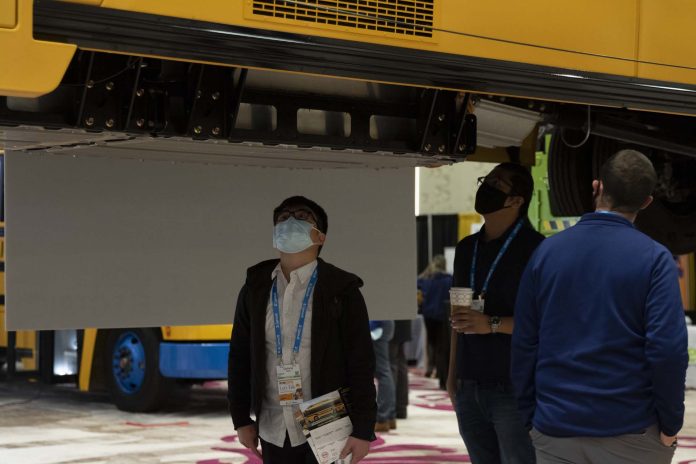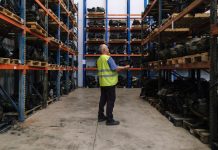I spend a lot of time reading, listening and pondering about the use of electricity to propel school buses, compared to modern diesel and other alternatives such as renewable diesel, CNG and LPG. We are undergoing a big change. However, I am often left with questions when hearing or reading about the environmental operational cost savings and in particular savings in maintenance.
When reading the operational and maintenance savings comparisons, the question I have yet to see asked and answered is, “As compared to what?” A new diesel, propane or CNG bus? Or a 15-year-old bus that is being retired? Additionally, as far as operational cost savings, I have yet to read anything about heating/cooling and component impact on range, electric source infrastructure cost and maintenance, interest expense, depreciation expense, depreciable life, and residual value, all part of a fleet manager’s life cycle operating cost calculation.
The truth of the matter is, the goal of “zero” emissions by environmentalists is one that cannot presently be achieved economically with the use of any fossil fuel. To argue the difference between fossil fuel and electricity purely on the output of tailpipe emissions is easy: Electric Vehicle “0,” Hydrocarbon Fuel Vehicle “+.” Because when our industry argues hydrocarbon or GHG emissions output, we only focus on the environmental effects of the vehicle power source using electrons or hydrocarbon fuel and not on the environmental impact of producing electricity compared to hydrocarbon fuel for a fleet of demand response vehicles such as school buses.
Related: Boston Targets 100% Electrification of School Buses by 2030
Related: Electric School Bus Collaborative Formed to Help with Electric School Bus Transition
Related: New Hampshire Looks to Establish Electric School Bus Pilot Program
While those questions remain to be answered, we must understand what drives the shift in thinking of EV buses as a solution to group concern regarding air quality of school bus emissions. Is it the most effective solution today? That one question is very tough to answer.
Regardless, if government agencies and school districts decide electric buses are the way to go, then electric buses we shall have. That certainly appears to be the case with the EPA’s new Clean School Bus program that provides at least $2.5 billion over five years to electric buses. Then, last month, EPA released its proposed rulemaking to further reduce NOx emissions from heavy-duty engines. We know this would impact Class 6, 7 and 8 truck chassis that Type C and D school buses are built upon. We just won’t know for a while what the impact will be other than the mandate for reducing NOx in those categories. I can only guess that that technology will be expensive.
Related: EPA Releases Initial Report on New $5B Clean Bus Program
Related: EPA Webinar Shares More Details on Clean School Bus Rebate Program
Approach the future as an educated consumer not an emotional one. As I read all the plans our industry bus manufacturers have for the future production of electric- powered school buses, I suggest you consider the following as points of discussion to have with them. This list may not be all-inclusive in your effort to determine your acceptance of electric-powered school buses and the ongoing operating commitment necessary. Challenge your supplier partners to alleviate any future concerns.
- Gaining knowledge on the ease and availability of getting vehicle- and infrastructure-specific grants from federal and state agencies mandating or advocating clean air and domestic energy
- Assisting with vehicle selection, system weight, and infrastructure cost
- Understanding the impact of future bus replacement funding, should government subsidies end
- Eliminating range anxiety by delivering battery technologies to increase driving range
- Understanding the impact of winter weather and on-board accessories that affect range of use
- Managing recharging time and the impact of charging cycles on battery life
- Identifying OEM sales team with an initiative taking approach for delivering vehicle and “fueling” infrastructure and training
- Knowing electric vehicle residual (how to dispose of a retried electric school bus)
- Training drivers and technicians
- Ensuring targeted warranty period (powertrain, electronics and battery)
- Ensuring safety (fire and crash protection)
All school bus manufacturers, dealers or regional sales staff understand the above and can help you in calculating the total costs and environmental benefits. Undertake this project with input from your business office and the school bus operation center, also for a reliable source of cost information, visit the U.S. Energy Information Administration website at eia.gov and type electric vehicle in the search box.
Editor’s Note: As reprinted in the April 2022 issue of School Transportation News.
Robert Pudlewski is the technical editor for School Transportation News and is a member of the National School Transportation Association Hall of Fame.
Related: Enthusiasm for Federal School Bus Funding Reflected at STN EXPO Reno
Related: STN EXPO Reno Panel Discusses Nuances of Air Purification on the School Bus
Related: Gallery: Trade Show at STN EXPO Reno 2021


















